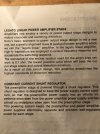OP
GlennGregor
Member
- Thread Starter
- #21
I run the TA-F555ES direct so I bypass the tone controls. This also gives me a perfectly flat response .ACT (Audio Current Transfer) was used in several Sony integrateds (and some sources like tuners) in the 1980s. It was short lived. The amplifiers were pretty good, although rather ugly with the volume control on the 'wrong' side.
The power stage is realtively conventional, and I really am not a fan of tone controls in the negative feedback loop.
The block diagram:
View attachment 349307
View attachment 349312
I've got a TA-F444es (1986) in the storeroom. It was comprehensively bettered by the TA-F333esR from 1989.



